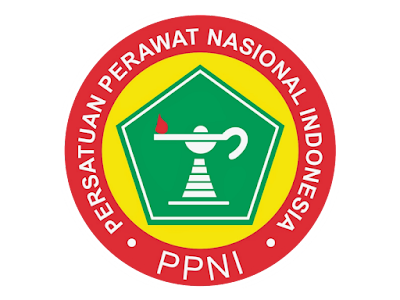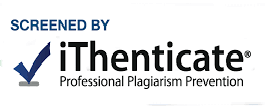PENGARUH PEMBERIAN DISCHARGE PLANNING TERHADAP KUALITAS HIDUP PASIEN STROKE NON HEMORAGI
DOI:
https://doi.org/10.35328/keperawatan.v13i1.2646Keywords:
Discharge Planning, Kualitas Hidup, Stroke Non HemoragikAbstract
Stroke is a neurological disorder that can lead to physical and psychosocial weakness and even disability. Discharge planning is an active process that starts from inpatient care, aimed at minimizing the risk of recurrence and improving the patient's quality of life so they can regain independence and functionality, returning to an active and productive lifestyle. The purpose of this study is to evaluate the discharge planning program for non-hemorrhagic stroke patients on their quality of life and daily activities. This research is a quantitative Quasi-Experimental study. The sample consists of 50 non-hemorrhagic stroke patients at Rumkit Tk II Putri Hijau Medan in 2022, from February to April, selected through purposive sampling. The research results show: a) the average total knowledge increased immediately after the implementation of discharge planning from 26% to 70%. b) The respondents' quality of life before discharge planning showed 76% poor, 14% moderate, and 10% good. After the discharge planning program was provided, the quality of life improved to 54% poor, 22% moderate, and 24% good. It can be concluded that there is a significant impact of discharge planning on the quality of life of non-hemorrhagic stroke patients with a P-value = 0.001 < 0.05.
Downloads
References
Clarke, D. J., & Forster, A. (2015). Improving post-stroke recovery: The role of the multidisciplinary health care team. Journal of Multidisciplinary Healthcare, 8, 433–442. https://doi.org/10.2147/JMDH.S68764
Elham, H., Zaky, M., Abd, Z., Mohammad, E.-L., Saad, A., El-Labban, T., & Ahmed, G. (2015). Strategies of Daily Living Rehabilitative Activities for Post Stroke Patients at Minia University Hospital. Journal of Education and Practice, 6(5), 61–72.
Faiz, K. W., Sundseth, A., Thommessen, B., & Rønning, O. M. (2018). Patient knowledge onstroke risk factors, symptoms and treatment options. Vascular Health and Risk Management, 14, 37–40. https://doi.org/10.2147/VHRM.S152173
Kemenkes. (2018). Riskesdas 2018. In Kementerian kesehatan republik indonesia.
Laily, S. R., Martini, S., Atik Choirul, H., & Eva Flourentina, K. (2020). Abdominal obesity as a risk factor of ischemic stroke incidence in Lamongan distric, Indonesia. Malaysian Journal of Medicine and Health Sciences, 16, 88–93.
Lindsay, M. P., Norrving, B., Sacco, R. L., Brainin, M., Hacke, W., Martins, S., Pandian, J., & Feigin, V. (2019). World Stroke Organization (WSO): Global Stroke Fact Sheet 2019. International Journal of Stroke, 14(8), 806–817. https://doi.org/10.1177/1747493019881353
Mahendrakrisna, D., Windriya, D. P., & Gts, A. C. (2019). Karakteristik Pasien Stroke Usia Muda di RSUD Kota Surakarta. Cermin Dunia Kedokteran, 46(3), 399392.
Neila Sulung dan Beauty Hartini. (2018). REAL in Nursing Journal ( RNJ ). Real in Nursing Journal (RNJ), 1(3), 114–122.
Oswald, G. R., Huber, M. J., Wilson, J. F., & Embree, J. (2015). The Status of Technology-Enhanced Education and Service Delivery in Rehabilitation Counselor Education. Rehabilitation Research, Policy, and Education, 29(3), 194–207. https://doi.org/10.1891/2168-6653.29.3.194
Pandian, J., Kalra, G., Jaison, A., Deepak, S., Shamsher, S., Singh, Y., & Abraham, G. (2006). Knowledge of stroke among stroke patients and their relatives in Northwest India. Neurology India, 54(2), 152–156.
Permatasari, D., Juwita, D. A., Yosmar, R., & Illahi, J. F. R. (2021). Evaluasi Rasionalitas Penggunaan Obat Neuroprotektif pada Pasien Stroke Iskemik di Rumah Sakit Stroke Nasional Bukittinggi. Jurnal Farmasi Dan Ilmu Kefarmasian Indonesia, 8(2), 162. https://doi.org/10.20473/jfiki.v8i22021.162-167
Potter. (2010). Fundamentals of Nursing : Fundamental Keperawatan Buku 2 Edisi 7 / POTTER (Potter (ed.); 2nd ed.).
Rabi Žikić, T., Divjak, I., Jovićević, M., Semnić, M., Slankamenać, P., Žarkov, M., & Žikić, M. (2014). The effect of post stroke depression on functional outcome and quality of life. Acta Clinica Croatica, 53(3), 294–301.
Said Taha, A., & Ali Ibrahim, R. (2020). Effect of a Design Discharge Planning Program for Stroke Patients on Their Quality of Life and Activity of Daily Living. International Journal of Studies in Nursing, 5(1), 64. https://doi.org/10.20849/ijsn.v5i1.724
Salam Ibrahim, R., & El-SayedSoliman, F. (2016). The Effect of Educational Program for High Risk People about Stroke Prevention. IOSR Journal of Nursing and Health Science, 05(04), 83–89. https://doi.org/10.9790/1959-0504028389
Smelzer (Ed.). (2014). Handbook for Brunner & Suddarth’s textbook of medical-surgical nursing. —12th ed. 2014.
Smith, J., Forster, A., & Young, J. (2004). A randomized trial to evaluate an education programme for patients and carers after stroke. Clinical Rehabilitation, 18(7), 726–736. https://doi.org/10.1191/0269215504cr790oa
Ulfah, A., & Ahyana. (2021). Pelaksanaan Discharge Planning Pada Pasien Stroke Di Rumah Sakit Umum Daerah dr Zaionel Abidin. Jurnal Keperawatan Universitas Syiah Kuala Banda Aceh, 1–6.
widiyono, widiyono, Dyah Herawati, V., & Nurani, W. (2023). Mirror Therapy Can Improve Muscle Strength in Non-Hemorrhagic Stroke Patients. Jurnal Keperawatan Malang (JKM), 8(1), 339–353. https://doi.org/10.36916/jkm.v8i1.204
Williams, L. S., Weinberger, M., Harris, L. E., Clark, D. O., & Biller, J. (1999). Development of a stroke-specific quality of life scale. Stroke, 30(7), 1362–1369. https://doi.org/10.1161/01.STR.30.7.1362
Downloads
Published
Issue
Section
License
Copyright (c) 2024 Al-Asalmiya Nursing: Jurnal Ilmu Keperawatan (Journal of Nursing Sciences)

This work is licensed under a Creative Commons Attribution 4.0 International License.














